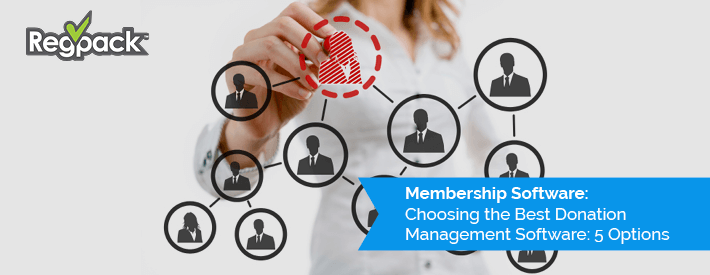A capital campaign can be both exciting and daunting for nonprofit organizations. On one hand, it signifies that your nonprofit is growing steadily and is ready to increase its impact.
On the other hand, it also means that your nonprofit has to prepare to manage the biggest fundraising campaign your team may have ever seen. By nature a capital campaign has a larger fundraising goal and a longer timeline than your other campaigns.
You’re a pro at planning solicitations and communicating with constituents, but now you’re going to have to combine all of your skills with the rest of your team’s into one super-fundraiser.
So how can you make sure that you approach your capital campaign in a way to ensure that you meet your goals over the next few years? We’ve collected 5 of our favorite strategies to keep the momentum going for a capital campaign:
Create a plan before starting your capital campaign.
Optimize your communication strategy.
Simplify the giving process.
Don’t skip steps if momentum wanes a little.
Keep in mind why you started the capital campaign.
By keeping these 5 easy tips in mind as you run your capital campaign, you’re sure to keep the momentum going and reach your goals.

1. Create a plan before starting your capital campaign.
You wouldn’t set off into the jungle on a quest without a map, right? You also shouldn’t embark on a capital campaign without a cohesive plan. This plan will keep your campaign on track once you’re off and running.
A good place to start planning your capital campaign is by conducting a feasibility study. A feasibility study is a way to gauge the support that your organization has in conducting a campaign of this magnitude.
Because a feasibility study requires discussions with leaders of both the community and the organization, they’re a great way to get those leaders involved and engaged with the campaign from the very start.
Then, once your study has concluded that your campaign is feasible, it’s time to plan out the intricacies of your campaign.
Some questions to ask your organization are:
- What is our capital campaign budget?
- What projects can we fund based on our proven fundraising capacity?
- What is our financial fundraising goal?
- What is our proposed timeline for this campaign?
Your timeline should include quantifiable mile-markers that you can use to gauge the progress of your capital campaign.
Once you’ve established the answers to all of these questions by working with your staff and board members, you can build a case for support for distribution.
Your case for support should detail:
- Your nonprofit’s mission and vision for the future.
- Why your organization needs funding now.
- What the outcome of this effort will be.
- Why the reader should feel moved to give.
The case for support can act as both a way for your team to stay on track as well as a vehicle for communication with your supporters. Your case for support should be your first offering to your potential contributors, when you approach them.
A great way to maximize your chances of success is to bring a fundraising campaign consultant onto your team for your capital campaign.
They’ll be able to bring an unparalleled level of nonprofit experience to your campaign from working with different nonprofits on different projects, with everything from running an annual fund campaign to conducting prospect research.
Creating a plan might seem like a basic strategy, but this plan will be vital to your campaign’s momentum once you’re off and running. Being able to come back to this plan will help you stack on track and revitalize your campaign should you start to lose steam.

2. Optimize your communication strategy.
Once your campaign is off the ground, you need to ensure that you’re communicating with the right people in the right way, so that you don’t stall out at the beginning.
The first step to ensuring that your communication strategy is effective enough to carry through your capital campaign is to make sure that you’re reaching out to the right people.
If you’re not conducting prospect research before your fundraising efforts, you need to start!
Prospect research is an easy way to find potential major gifts contributors. This type of research includes looking at a person’s indicators of wealth and philanthropic behavior, i.e. real estate ownership and previous philanthropic or political giving.
Prospect research is the gift that keeps on giving, because it allows you to search through people’s networks of connections to continue finding potential supporters who have a history of supporting causes like yours.
Once you know what motivates people to give to different organizations in what amounts, you can use this information to tailor your asks to them in terms of both reasons to give as well as suggested gift size.
Other people to consider while crafting your communication strategy are:
- Your board members and their networks.
- Local civil servants or elected officials.
- Anyone who was included in your feasibility study.
- Previous volunteers, contributors, or event attendees.
These people are important to include because they have the social influence to help keep your momentum going once your capital campaign begins.
Your board can use their social networks to find more supporters that you might not have found through prospect research, and local government officials can provide a trusted voice to spread your cause.
Your case for support should be the first thing you distribute to these potential supporters, as well as a handshake and a smile.
Once your capital campaign becomes public, make it apparent that your capital campaign has the social trust necessary to reach its goals.
Optimize your social media strategy to keep supporters updated through platforms like:
Using a variety of platforms will reach a broader audience, but promoting a consistent message across all platforms, using the same images and hashtags, will ensure that the community you’ve reached knows that your organization is committed to your campaign.

3. Simplify the giving process.
Another important strategy for keeping the momentum up during your campaign is to make giving as easy as possible. One way to do this is to make sure that your online presence is optimized to accept gifts.
As you employ different advertising strategies or stage different awareness-raising campaigns, you’ll want your supporters to be able to give whenever they feel moved.
One easy way to do that is to make sure that your online giving page follows some simple best practices:
- Everything is mobile-optimized or mobile responsive.
- It is easy to find: link to it from your website, your email campaigns, your social media bios.
- Only the necessary fields are included on your form to complete the contribution.
- Your page is branded to your organization, so people are confident that they’re giving to the right place.
- You’ve added suggested gift buttons, to take the guesswork out of giving.
If you need some more help with creating or updating your campaign page, head over to Donately’s campaign page best practices guide!
In addition to your webpage for giving, consider investing in some mobile giving software. This will allow your more tech-savvy contributors to give as they feel moved, and can make it easy for those giving smaller gifts to do so quickly and effectively.
Mobile giving also encourages repeated giving, because those who may have given by check may feel moved to give again at a fundraising event or charity auction and will be able to do so just by having their phone with them!
Finally, consider investing in matching gifts software to integrate into your giving page and supporter database. A matching gifts program could double the efficacy of your fundraising strategy, without requiring your supporters to dig deeper into their own pockets.

4. Don’t skip steps if momentum wanes a little.
When in doubt, always go back to your plan! Your timeline was built the way it was for a reason, so don’t abandon it once the going gets slow.
For example, if you haven’t reached your fundraising goal for your quiet phase yet but you’re approaching the day you had planned to kickoff your public phase, don’t rush to go public in the hopes that it’ll bump your momentum.
You’ll see a small bump, but then momentum will slow again. Instead, return to your communication strategy and prospect list and get innovative.
Go back to the gift range chart that you created during your feasibility study. This is a valuable resource for breaking down your fundraising goal into more manageable pieces.
Which ranges of gifts are your fundraising strategies missing? Have you overlooked any prospects that could fill the gaps, or could you make up the difference by more effectively directing your energy towards a different group of prospects?
The next step is to remain positive and enthusiastic! You believe in your nonprofit’s cause, and you believe in your capital campaign. Don’t spread negativity or doubt to your team or your board members.
It’ll set a bad precedent for any potential future long-term campaigns, and has the potential to poison the future of this campaign. By remaining upbeat, you can keep spirits high and prevent the possibility of your board wanting to bail out of the campaign early.
However, if you are having trouble meeting your next mile-marker, go back to the drawing board. Consider who to discuss these problems with:
- Your fundraising or marketing staff
- Your board members
- Your campaign consultant
And then work together to find the source of the problem and brainstorm how to fix it.
If you hadn’t brought a campaign consultant onboard yet and your campaign is beginning to stall out, consider reaching out to one now. They might be able to find the kink in the hose that was blocking gift flow, or offer innovative ways of doing things that you hadn’t considered.

5. Keep in mind why you started the capital campaign.
Capital campaigns can be a monster of a fundraising endeavor. But you and everyone else involved knows that you wouldn’t have embarked on this campaign if you weren’t positive that it was for the good of the organization, as well as the cause you serve.
Remind your supporters, as well as yourself, of the importance of your organization and the work you do in the community.
Your communication strategy should be centered around the narrative arc of your organization: starting with your humble beginnings, all the way to where you are now. You’ve overcome obstacles and persevered, because you believe in your cause.
Your storytelling arc should reflect this development: consider highlighting a culture of gratitude and growth within your organization as the centerpiece.
Your community knows the work that your organization has done, and will want to support you if they know you need help. Or, if your community doesn’t know the work you’ve done, display the change your nonprofit has created.
Keeping the purpose of your capital campaign in mind while you run the race you’ve set out for your team can beat back discouragement and fatigue, and keep your team excited and energized for the rest of your campaign.
_______________________________________________________________________
A capital campaign can be a hard stunt to pull off for any organization, but by following our 5 easy tips, you’ll be sure to keep up your momentum and take your organization to the next level.
If your team is looking for something to reignite your fundraising efforts and drive your success to the next level, look no further. This guide for hiring a campaign consultant from Averill Fundraising Solutions is a great place to start.


















